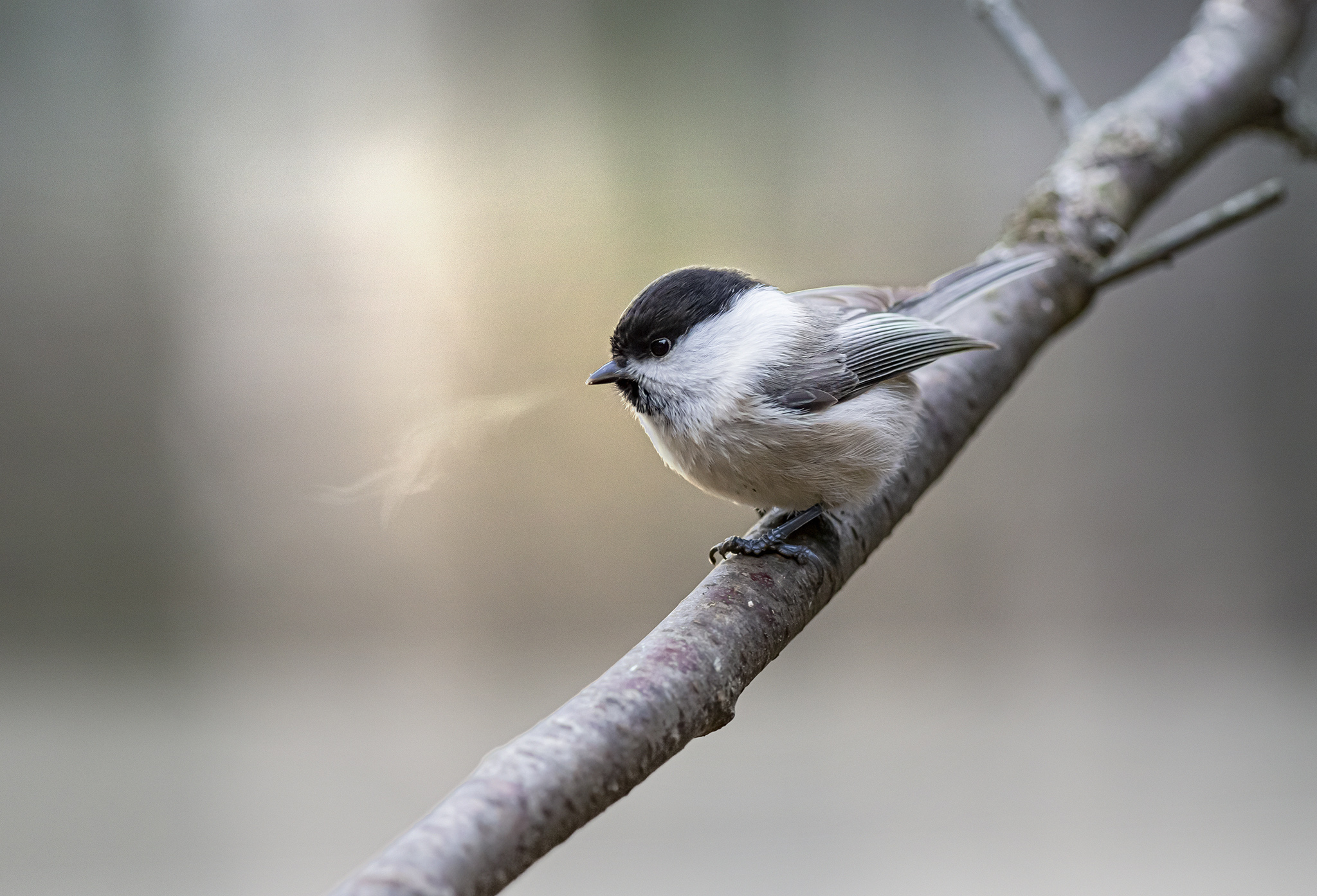Willow Tit (Poecile montanus) Overview
The Willow Tit (Poecile montanus) is a small, non-migratory songbird from the tit family, commonly found in temperate forests across Europe and Asia. It is often confused with the Marsh Tit (Poecile palustris), but subtle differences in plumage, vocalizations, and habitat preferences help distinguish them.
General Information:
- Scientific Name: Poecile montanus
- Common Name: Willow Tit
- Family: Paridae (Tits)
- Size:
- Length: 11–12 cm (4.3–4.7 inches)
- Wingspan: 17–20 cm (6.7–7.9 inches)
- Weight: 8–14 g (0.3–0.5 oz)
- Lifespan: 2–4 years, but some individuals can live up to 7 years
Appearance & Identification:
- Head: Black cap extending to the nape, with a small black bib
- Face: White cheeks contrasting with the black cap
- Body:
- Upperparts: Greyish-brown
- Underparts: Pale buff to off-white
- Bill: Short, pointed, and black
- Tail: Relatively long, with a slightly rounded tip
- Key Differences from Marsh Tit:
- Duller plumage with more brownish tones
- No glossy sheen on the black cap
- Larger, pale wing panel (often faint but visible in good light)
- Harsher call compared to the Marsh Tit’s sweeter sound
Distribution & Habitat:
- Found across Northern and Central Europe, Scandinavia, and parts of Asia, extending to Japan and Siberia
- Prefers wet woodlands, mixed forests, and willow or alder thickets
- Unlike other tits, it often inhabits more open, scrubby areas
Behavior & Ecology:
- Song & Calls:
- Harsh, nasal “zee-zur-zur” or “chick-a-dee“-like calls
- More raspy and buzzing compared to the Marsh Tit
- Social Structure:
- Territorial and non-migratory, often staying in the same area year-round
- Pairs defend feeding and nesting areas aggressively
- Flight Pattern:
- Quick, fluttering flight, often moving through dense branches
Diet & Feeding:
- Omnivorous:
- In summer: Insects, spiders, and caterpillars
- In winter: Seeds, berries, and fungi
- Foraging Behavior:
- Often stores food in tree crevices to eat later
- Frequently seen hanging upside-down while foraging
Nesting & Reproduction:
- Breeding Season: April to June
- Nest Location:
- Unlike other tits, it excavates its own nest cavity in rotten wood
- Sometimes uses old woodpecker holes or nest boxes
- Clutch Size: 6–9 white eggs with reddish spots
- Incubation: 13–15 days, with the female incubating
- Fledging: Chicks leave the nest after 16–18 days
Predators & Threats:
- Predators:
- Birds of prey (e.g., sparrowhawks)
- Nest predators like woodpeckers, squirrels, and weasels
- Threats:
- Loss of deadwood habitats due to forest management
- Competition with Marsh Tits for food and nesting sites
- Climate change, which affects insect availability
Conservation Status:
- IUCN Red List: Near Threatened (NT) in some regions due to habitat loss
- Conservation Efforts:
- Protection of old woodlands and deadwood
- Providing nest boxes with soft, rotten wood for excavation
Interesting Facts:
- One of the few tit species that excavates its own nest
- Despite its name, it’s not strongly associated with willows—it prefers rotting tree trunks
- It stores food for winter, a survival strategy for harsh northern climates
Would you like tips on distinguishing the Willow Tit from similar species like the Marsh Tit? 😊🐦
Visited 903 times, 10 visit(s) today
Views: 1620
Subscribe to the newsletter:
